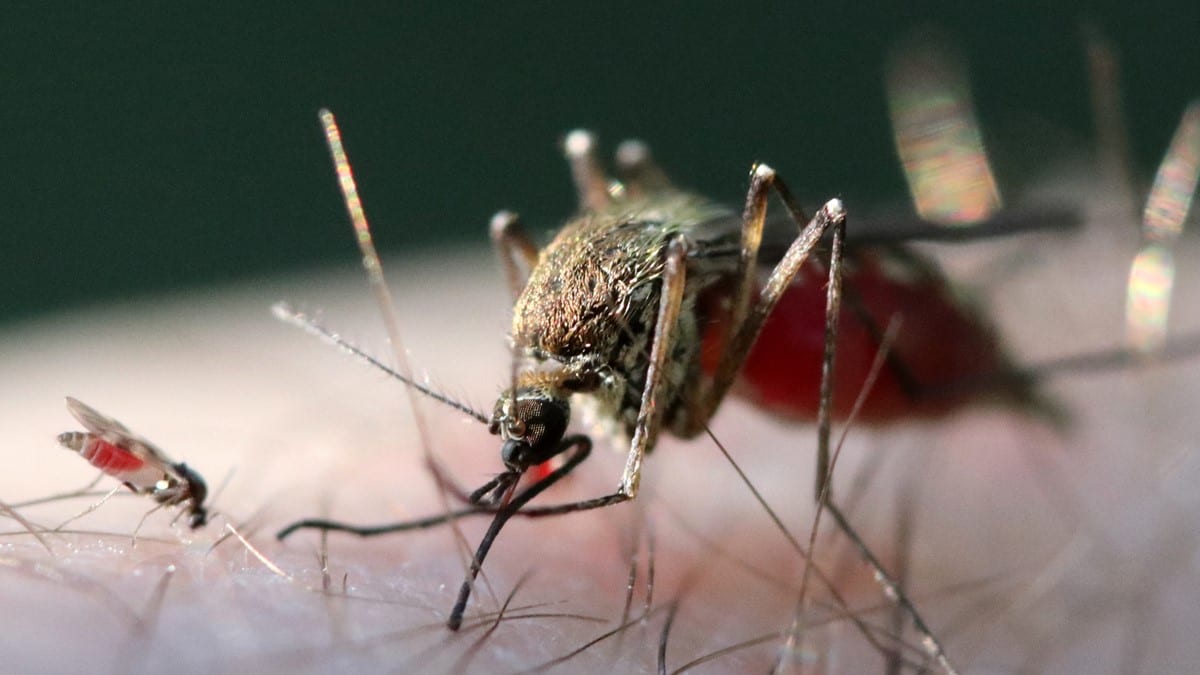At a glance
- Oropouche virus is spread by tiny biting midges.
- CDC is studying which midges might spread the virus.

A tiny bug may pack a big bite

In 2019, CDC medical entomologist Roxanne Connelly was advising a research fellow who wanted to study an obscure virus usually found in the Amazon region of South America.
"It is not a pathogen that had been in the U.S. before," Connelly says. But the research fellow wanted to find out which insects found in the United States would be most likely to carry the virus if it spread beyond its usual range.
The virus was Oropouche, which is now making headlines due to an outbreak in Cuba, a handful of cases in travelers from the United States and Europe, and reports of possible stillbirths and birth defects in Brazil. A paper detailing the results was published in 2021—"And now, suddenly, that paper is very important," Connelly says.
People can get infected with Oropouche virus through insect bites. The virus is spread mostly by tiny biting midges, sometimes called "no-see-ums," though some mosquitoes can spread it as well. Oropouche infection can cause fever, joint pain, and body aches that usually get better within a week. But for some people, symptoms may come back a few days or up to a few weeks after initially getting better—and for others, the illness can be more severe.
The current outbreak has raised concerns that Oropouche could spread to the United States. A biting midge species that could carry the virus lives in the eastern United States. The study Connelly participated in found that another species usually found in western states could also carry Oropouche.
Connelly is a former University of Florida professor who frequently advised local governments in the state on how to control mosquito populations. But there's less known about controlling biting midges in the community. Because of their small size, biting midges can crawl through most screens that otherwise keep out mosquitoes. Chemicals used to spray for mosquitoes in the community will also kill biting midges, but those are typically used when mosquitoes are most active. Biting midges can be out and around at different times of day, the time varies among different species, Connelly says.
"We know the equipment and products used to control mosquitoes will also work on biting midges," she says. "But what's not been evaluated is how effective the products are in getting to where the biting midges are." CDC hopes to work with partner agencies to answer that question and conduct more tests on insects collected in the wild, Connelly says.
Prevent bug bites
But the good news is that some of the same prevention tips that prevent other diseases spread by bug bites will help prevent midges from biting as well. If you're going to be outside in an area where biting midges are active:
- Wear loose-fitting, long-sleeved shirts and pants.
- Use an Environmental Protection Agency (EPA)-registered insect repellent that's labeled for use against flies, biting flies, or Culicoides (biting midges, punkies, granny nippers, and no-see-ums).
- Stay in air-conditioned places to keep insects outside.
- Pregnant travelers should discuss travel plans, reasons for travel, steps to prevent insect bites, and potential risk with their healthcare provider and reconsider non-essential travel to countries with an Oropouche virus Level 2 Travel Health Notice.
- If travel is unavoidable, pregnant travelers should strictly follow Oropouche prevention recommendations to prevent insect bites during the trip.
CDC is working to learn more about the potential risks of Oropouche and will keep the public informed and update its recommendations as needed.
